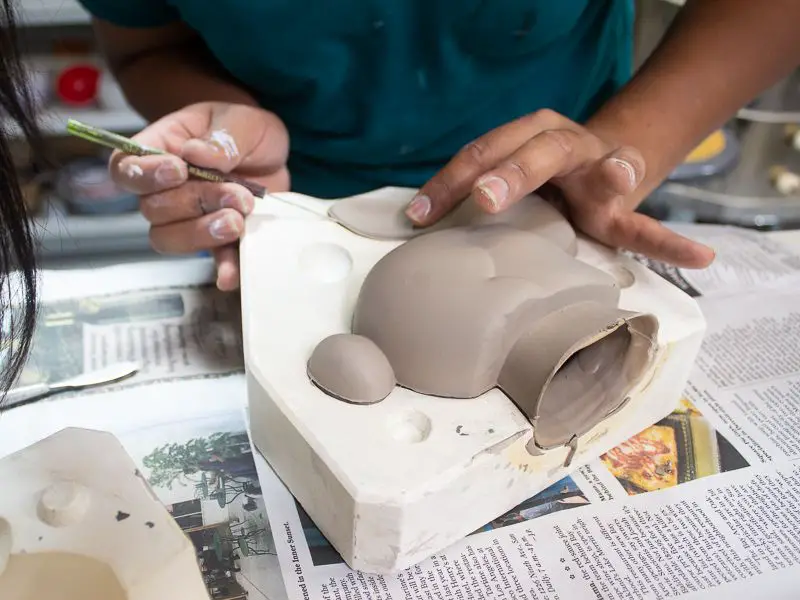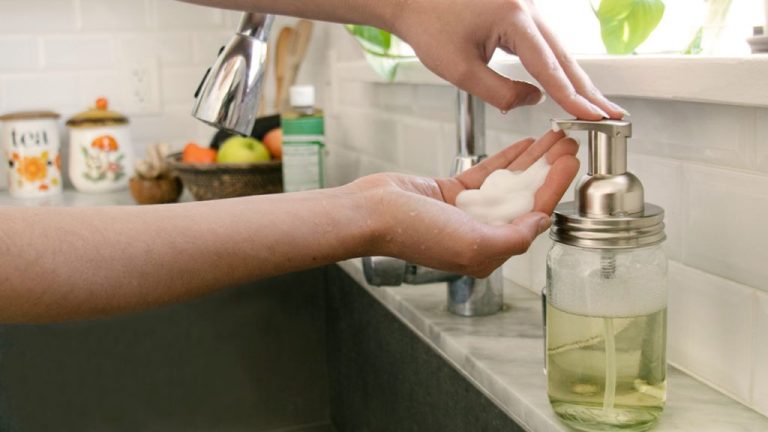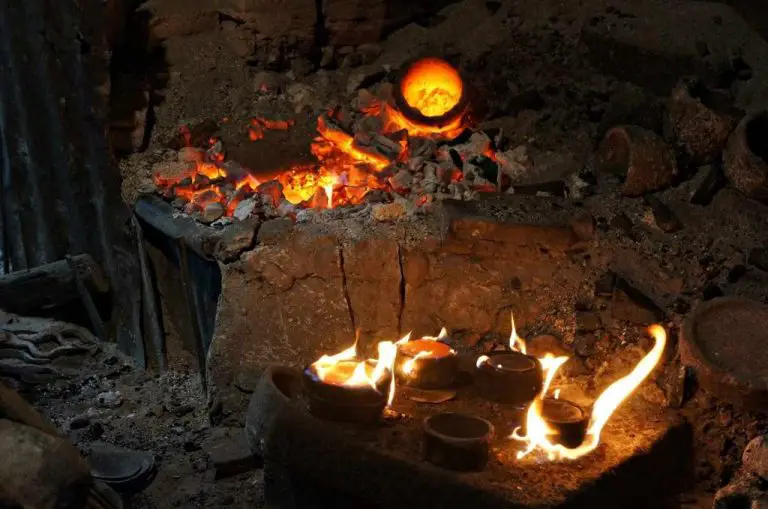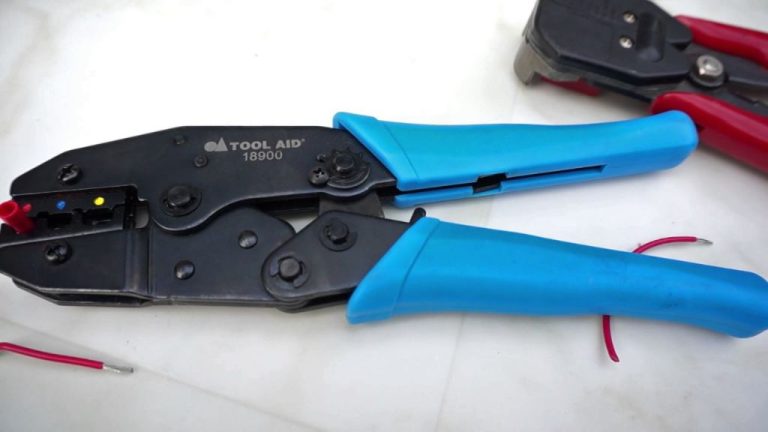What Is Slip Casting Process?
Slip casting is a ceramic forming technique for pottery and other ceramics, especially for shapes not easily made on a wheel. Slip casting involves pouring a liquid clay body slip (a suspension of clay particles in water) into plaster molds. The water from the slip is absorbed into the plaster mold, leaving a layer of solid clay on the mold surface that thickens with time. When the desired thickness is reached, the remaining slip is poured out of the mold. For complex or indented surfaces, a counter mold is required.
The origins of slip casting can be traced back to China’s Tang Dynasty (618-917 CE), but it did not see extensive use in China until more modern times. The technique became more widely adopted in Europe starting in the 18th century as a means of producing ceramics on a larger scale. Today, slip casting is used extensively in the sanitaryware and tableware industries for high volume production. It allows consistent replication of shapes while keeping labor costs low compared to hand throwing and other techniques. Some limitations of slip casting include its unsuitability for complex shapes with reentrant angles or complex curves. Overall, slip casting enables efficient, low cost production while maintaining a handmade aesthetic.
Key sources:
https://en.wikipedia.org/wiki/Slip_casting
How Slip Casting Works
Slip casting is a forming process used to create precision ceramic components with complex geometries. It involves pouring a liquid clay slip into a porous plaster mold and allowing capillary action to draw the slip onto the mold’s surface.
The basic steps of slip casting are:
- Pouring slip into the porous plaster mold.
- Letting the liquid slip coat the inside walls of the mold through capillary action, leaving an even layer of uniform thickness.
- Draining the excess slip away from the mold after the slip has coated the mold walls, leaving a hollow cast in the shape of the mold.
- Allowing the cast piece to dry partially before removing it carefully from the mold.
- Drying and then firing the cast piece in a kiln, which hardens and strengthens the ceramic.
The plaster mold absorbs water from the slip mixture, causing the clay to solidify on the mold’s surface. The remaining slurry drains away through the porous mold walls. Once the cast piece has dried sufficiently, it can be removed from the mold and finished with additional drying and firing to fully harden the ceramic.
Slip Casting Equipment
The key pieces of equipment used in the slip casting process include:
Plaster molds – The ceramic piece is formed by pouring slip into a plaster mold. The plaster absorbs water from the slip leaving a layer of solid clay on the mold surface. Molds are usually made of plaster of paris and formed into the desired shape.
Slurry reservoir – The slurry reservoir holds the prepared liquid clay slip before it is poured into the plaster molds. The reservoir needs to be large enough to hold the required amount of slip.
Draining table – A draining table allows excess slip to drain off once the plaster mold has absorbed the water. It is sloped to facilitate draining and has a drain at one end. A draining rack may also be used. As cited on the Bailey Pottery website, “Draining boards should be made so that ware can be drained in a nearly vertical position.” (https://www.baileypottery.com/store-dept-pottery-ceramic-studio-equipment/store-slip-equipment-accessories.html)
Slip Preparation
The first step in slip casting is to prepare the liquid clay slip. This involves mixing clay powder with water and chemicals called deflocculants. The deflocculants help to break down clay particles so they remain suspended uniformly in the water rather than clumping together.

The ratio of clay to water is important for achieving the right viscosity for casting. Too thin of a mixture will drain too quickly from the mold. Too thick and it won’t flow well into intricate mold details. Getting the slip to the “cream” consistency suitable for casting involves repeatedly mixing, testing viscosity, and adjusting the amounts of clay and water.
Once the proper viscosity is reached, the slip must be de-aired to remove any air bubbles. Air bubbles can get trapped against the mold surface during casting, leaving undesirable voids and blisters on the finished piece. De-airing is done by vacuuming or applying a vacuum to the slip to draw out the bubbles before casting.
Properly mixed, viscous, and de-aired slip ensures optimal flow into the mold and results in a smooth, even cast with excellent mold reproduction detail. Skilled control of slip properties allows intricate and precise casting of ceramic wares.
Advantages of Slip Casting
Slip casting has several key advantages that have made it a popular process for manufacturing ceramic items. Some of the main benefits of slip casting include:
- Ability to Make Complex Shapes – Slip casting can produce highly intricate and detailed shapes that would be difficult or impossible with other ceramic manufacturing techniques. The liquid slip flows easily into complex molds.
- Low Labor Requirements – Once the mold is made and the slip is prepared, slip casting is an automated process that requires little direct labor compared to other ceramic production methods. Castings are produced quickly with minimal supervision.
- Consistent Results – Slip casting yields very uniform castings with little variability between parts. The process can consistently reproduce complex shapes.
- Cost-Effectiveness – Slip casting molds can be reused many times. When amortized over many castings, the per part cost is very economical compared to other approaches.
As described on SlideShare, slip casting is an efficient and high-precision manufacturing technique. It allows intricate ceramic objects to be mass-produced at low cost. The main advantages are the ability to make complex shapes, low labor needs once set up, consistency between cast parts, and economy of scale.
Disadvantages of Slip Casting
While slip casting has many benefits, it also comes with some limitations. Some of the main disadvantages of slip casting include:
Limited size of products – The size of products made with slip casting is restricted by the size of the plaster molds. Very large products are difficult to make as the slip may not flow evenly into a large mold before setting. According to one source, slip casting has dimensional limits compared to techniques like isostatic pressing (Effect of Stearic Acid on the Rheology and Moulding).
Relatively slow process – Slip casting takes time as the molds must fully absorb the water before they can be emptied. The speed depends on factors like the porosity of the plaster and the thickness of the walls, but it is not a fast production method.
Plaster mold maintenance – The plaster molds are fragile and can only be used for a certain number of castings before needing repair. Proper storage and handling of the molds is important. According to one source, plaster molds need ongoing maintenance and have a limited lifespan (Slip casting materials wholesale).
Slip Casting Applications
Slip casting is widely used to produce a variety of ceramic products. Some of the major applications of slip casting include:
Sanitaryware – Slip casting is commonly used to manufacture ceramic sanitaryware including toilet bowls, sinks, bathtubs, and shower trays. The slip is poured into plaster molds to form the products with intricate shapes and designs. According to https://thegeneralco.sg/products/introduction-to-slip-casting, slip casting allows efficient mass production of sanitaryware.
Tableware – Slip casting enables high volume production of ceramic tableware like plates, bowls, cups, and saucers. The plaster molds can be designed to produce tableware in a variety of shapes, sizes, and patterns. As per https://hackaday.com/2018/05/20/slipcasting-resin-prototypes/, complex tableware designs are easily achieved through slip casting.
Decorative Ceramics – Slip casting is widely used to manufacture decorative ceramic items like vases, figurines, sculptures, and wall plaques. The liquid slip precisely captures intricate artistic details from the plaster mold. According to https://castimo.de/slip-casting-put-on-the-pressure/, decorative ceramics with complex geometries can be efficiently mass produced using the slip casting technique.
Innovations in Slip Casting
There have been several key innovations in slip casting technologies and processes in recent years. Some of the most notable advancements include new casting materials, automated equipment, and computer-aided design.
New casting materials such as advanced plasters and composite slips have enabled more intricate and detailed castings. Composite slips made with additives like grog, silica, and alumina allow for casts with increased strength, extended working time, and reduced drying shrinkage [1]. Automated equipment like the automated slip casting system developed by KYOCERA has accelerated production time and enabled mass manufacturing of slip cast products [1].
Computer-aided design (CAD) and technologies like 3D printing have opened up new design possibilities for slip casting molds. With CAD, complex curved surfaces and innovative shapes can be modeled precisely for the mold. This allows for more intricate, optimized casts not achievable manually [2].
Notable Slip Casting Companies
Slip casting is used globally by major manufacturers and small studios alike. Some of the most notable slip casting companies include:
United States – The US is home to major slip casting companies like Lenox, maker of fine china dinnerware, and Kohler, known for sanitaryware and tiles. Other notable companies are Hummel Figurines in Virginia, McCoy Pottery in Ohio, and Rookwood Pottery in Cincinnati. Many smaller slip casting studios are located in major ceramics hubs like Maine, North Carolina, California, and Oregon.
United Kingdom – The UK has a long tradition of slip casting, with major companies like Royal Doulton, Wedgwood, and Portmeirion producing fine china, gifts, and tableware using the technique. Stoke-on-Trent is known as the heart of UK slip casting.
France – French slip casting companies like Raynaud and Deshoulières are renowned for their limoges porcelain tableware. Limoges, France is the center of the country’s slip casting industry.
Japan – Japanese slip casting companies produce tableware, sanitaryware, and gift items. Noritake, Narumi, and Toto are leading manufacturers. Major production centers include Seto, Gifu prefecture and Tokyo.
Other major manufacturing hubs include China, Mexico, Italy, Brazil, and Indonesia. Overall the industry remains dispersed globally with concentrations in certain locales.
The Future of Slip Casting
The slip casting industry is poised for strong growth in the coming years. According to one source, the global slip casting market is projected to grow at a CAGR of over 5% from 2022-2030 [1]. There are several key factors driving this growth:
Firstly, slip casting is being adopted in new applications like aerospace, automotive, and medical device manufacturing. The ability to produce complex shapes with tight tolerances makes slip casting suitable for engineering applications [2].
Secondly, innovations in digital technology are enabling more agile design and rapid prototyping with slip casting. CAD models can be quickly converted into 3D printed molds, accelerating the product development process [2].
Lastly, as environmental regulations grow stricter, manufacturers are looking for greener production methods. Slip casting generates less waste compared to subtractive techniques like machining [3]. This makes it attractive for sustainable manufacturing.
In the future, we may see custom-fitted medical implants, lattice structures, and other complex geometries made viable through advances in slip casting. The process holds tremendous potential waiting to be unlocked.



